Laboratory of Structural Bioinformatics
About us
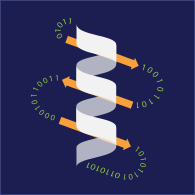
The amount of available biological data, originating from various experimental procedures (genome and transcriptome sequencing, structure determination, functional assays), is vast. In our group, we employ computational techniques, such as deep learning, molecular dynamics simulations, and sequence analysis to make use of this data. We are particularly interested in understanding how protein folds have emerged and how protein structures and functions are encoded by the alphabet of 20 amino acids. For details see projects tab.
News
Slipknotted and unknotted monovalent cation-proton antiporters may have evolved from a common ancestor
Oct. 14, 2021
The evolutionary origin of slipknot topology in proteins remains a mystery. In a collaborative effort with Joanna Sułkowska’s group [https://jsulkowska.cent.uw.edu.pl/ ], we identified a slipknot motif in a family of two-domain membrane transporters, which enabled us to direct investigation of its evolution. Moreover, we developed tools that may be useful in the investigation of the evolution of other repeated-domain proteins. The work was published by PLoS Computational Biology.
Rossmann toolbox officially published!
Sept. 24, 2021
The Rossmann fold enzymes are involved in many essential biochemical pathways such as
nucleotide and amino acid metabolism. Their activity is strictly dependent on the presence of a
nucleotide-based cofactor bound to a conserved region called beta-alpha-beta core. By applying
deep-learning techniques we created a computational tool that enables the prediction and re-design
of cofactor specificity in Rossmann fold enzymes. Our work was appreciated by prestigious
Briefings in Bioinformatics. The method is
available as a web server and as a standalone tool .
Rossmann-toolbox: a tool for the prediction and redesign of protein-cofactor interactions
May 7, 2021
Rossmann fold is a large class of proteins encompassing a multitude of various oxidoreductases and methyltransferases. All of them employ a conserved region, termed the core motif, to interact with nucleotide-based cofactors (NAD, NADP, FAD, and SAM) that are essential for their functioning. In course of our research, we developed a computational tool for the prediction and redesign of such protein-cofactor interactions. The tool can be accessed via the web server and GitHub repository. A detailed description of the methodology can be found in a preprint that just showed up online.
Results of our recent collabortion published
Feb. 3, 2021
KfrA genes are widely-present in broad-host-range plasmids and have been shown to act as transcriptional auto-regulators. We have recently taken part in a study that focused on the structure and function of coiled-coil domains of two KfrA proteins. Using tools developed in our lab, SamCC Turbo and DeepCoil we revealed peculiar structural features of these domains that may be essential for the functioning of KfrA proteins. Further molecular dynamics and modeling simulations have shown that these specific non-canonical regions are constantly present, suggesting that they are an inherent feature of KfrA coiled-coil domains. Overall, performed studies allowed us to postulate the hypothesis that KfrA type proteins have moonlighting activity – they not only act as transcriptional auto-regulators but form cytoskeletal structures, which might facilitate plasmid DNA delivery and its position in the cells.
SamCC Turbo published in Bioinformatics!
Jan. 11, 2021
Coiled coils are widespread, highly-regular, protein domains involved in diverse processes ranging from providing structural rigidity to the transduction of conformational changes. We have developed SamCC Turbo, a fully automated tool for the detection and characterization of these biologically important structures. By applying SamCC Turbo to the whole Protein Data Bank served via localpdb, we built a comprehensive library of coiled-coil domains. We showed how this machine learning-ready data set can be used in focused and global analyses, such as the development of a new version of DeepCoil, a tool for the detection of coiled-coil domains in sequences.
Ada and Kamil have defended their theses!
Oct. 26, 2020
We are delighted to inform you that two members of our team Adriana Bukała and Kamil Kamiński have defended their theses. Adriana's BSc work entitled "Ancestral state reconstruction approach in investigating Rossmann fold evolution" focused on deciphering the evolution of regions responsible for the cofactor binding, whereas Kamil's MSc work entitled "Re-engineering cofactor specificity of the Rossmann fold proteins using graph neural networks" describes a new method for predicting the cofactor specificity in Rossmann enzymes. Congratulations!
Phylogenetic analysis of Dsb system component in C. jejuni
April 14, 2020
The disulfide bond formation catalyzed by bacterial proteins of the Dsb (disulfide bond) system is a crucial step in the folding process of a protein. Although we now have a good understanding of the Escherichia coli disulfide bond formation system, there are significant gaps in our knowledge concerning the Dsb systems of other bacteria, including Campylobacter jejuni, a food-borne, zoonotic pathogen. In a recent article prof. Katarzyna Jagusztyn-Krynicka and her co-workers investigated C8J_1298 protein, a Dsb system component from this organism. Our group contributed to this study by performing a phylogenetic analysis of C8J_1298 and its homologs and thus shedding light on its evolution.
President of Polish Academy of Sciences award for Jan Ludwiczak
Dec. 3, 2019
We are happy to inform that our colleague, Jan Ludwiczak, has obtained an award for PhD students founded by the President of Polish Academy of Sciences. More details (in Polish) can be found here. Congratulations!
Molecular dynamics study of Ncd motor domain published
Aug. 28, 2019
The last ~30 amino acids of kinesin-14 Ncd head play a crucial but still poorly understood role in a lever-like rotation of a long superhelical 'stalk' segment while one of the kinesin's heads is bound to the microtubule. The members of our lab Jan Ludwiczak and Antonio Marinho published a paper describing how a new conformational state can be accessed and stabilized with several hydrogen bonds mediated by residues located on the border or within the C-terminal linker. Such stable compact conformation of Ncd may represent an initial state of the working stroke.
Diamond grant and Etiuda awarded to our students
Aug. 2, 2019
It is our pleasure to inform that Aleksander Wiński was awarded Diamond Grant that will allow him to start his PhD studies in the fall. Moreover, Jan Ludwiczak obtained Etiuda grant during which he will visit our collaborators in Max Planck Institute for Developmental Biology in Tübingen.
Polish Children's Fund students
July 5, 2019
Jun 10-14 we were honored to host two young students of Polish Children's Fund. During the stay, they had an opportunity to participate in ever-day lab life and work on their own project. The students, Emilia and Krzysztof, have developed a deep-learning based predictor of protein secondary structure, which can be accessed online. In the last day, we got a beautiful hand-made postcard. Thus, we believe that the students enjoyed the stay as much as we enjoyed hosting them :-).
PiPred saw the light of day!
May 6, 2019
As you may have heard, protein structures consist of secondary structure elements. The most abundant are alpha-helices and beta-sheets; however, there are more types of secondary structure elements, for example, pi-helices. Pi-helices are similar to alpha-helices but are less stable. In our recent work we showed that these rare secondary structure elements are frequently associated with functionalities such as ligand- or ion-binding and, most importantly, we presented a tool - PiPred - that can predict pi-helices directly from a sequence. PiPred is available as a web service and can be downloaded as a standalone tool.
FleXgeo published!
Dec. 29, 2018
One of the main challenges of protein flexibility analyses is the mathematical representation of the protein conformational space. Our team member Antonio Marinho recently published a paper describing a new protein dynamic analysis method based on differential geometry representation of protein backbone. Presented method avoids most pitfalls of popular mathematical representation, such as phi-psi, atomic coordinates and collective variables. The FleXgeo software to compute such analyses is available for download.
RRMdb paper was published in Database!
Dec. 29, 2018
RNA-recognition motif (RRM) is an RNA-interacting protein domain that plays an important role in the processes of RNA metabolism such as splicing, editing, export, degradation, and regulation of translation. We developed RRMdb database, which allows for a quick identification and annotation of RRM domains in a given protein sequence. We provide the RRMdb database as a tool both for the experimentalists searching for basic knowledge about RNA-binding proteins with RRM domains as well as those studying the evolution of RRM domains. RRMdb can be accessed here and the paper is available here.
DeepCoil paper was published in Bioinformatics!
Dec. 29, 2018
That's one small step for man, one giant leap for coiled coils! By combining our expertise on coiled-coil domains with the modern deep learning approaches, we have built DeepCoil, a fast and sensitive method for the detection of coiled coils based on sequence data. DeepCoil can be accessed via MPI Toolkit or downloaded as a stand-alone software. We plan to further develop DeepCoil, thus all suggestions on how to improve it will be more than welcome. The paper is available here.
Aleksander Wiński has obtained a BSc degree!
Sept. 3, 2018
We are happy to announce that Aleksander Wiński obtained BSc degree from the Faculty of Physics, University of Warsaw. The title of his work was "The use of deep learning methods to predict protein π-helix secondary structure based on sequence and evolutionary information" (Polish title: "Zastosowanie metod uczenia głębokiego do przewidywania białkowych struktur drugorzędowych typu helisa π na podstawie sekwencji i informacji ewolucyjnej"). The work (only in Polish) can be downloaded here.
First Team grant awarded to Stanisław Dunin-Horkawicz
Aug. 8, 2018
We are very happy to announce that Foundation for Polish Science awarded Stanisław Dunin-Horkawicz with First Team grant for the project entitled "An evolutionary-based approach to design the substrate specificity of the Rossmann fold enzymes".
CCpred published!
July 3, 2018
Sequence design combined with machine learning techniques comprise a powerful tool for aiding sequence-structure relationship studies. In our work "Variability of the core geometry in parallel coiled-coil bundles" recently published in Journal of Structural Biology, we applied this approach to study determinants of hydrophobic core packing geometry in parallel homotetrameric coiled coils.
PiPred: a tool for predicting π-helices in protein sequences
June 1, 2018
π-helices are short, unstable secondary structure elements present in 25% of all protein structures, often in functionally important regions. Given their similarity to α-helices, prediction of π-helices is a challenging task and none of the currently available secondary structure prediction methods tackle it. To fill this void, we have developed PiPred, a publicly available tool for predicting π-helices in protein sequences. PiPred is freely available on the web (as a part of the Quick2D tool). A standalone version is available for download at GitHub.
New publication with our collaborators from University of Warsaw
April 21, 2018
The collaboration with Prof. Katarzyna Jagusztyn-Krynicka from Faculty of Biology (University of Warsaw) resulted in a new publication that just has appeared in PLoS ONE (link). Our phylogenetic analysis helped to put the experimental work of Prof. Jagusztyn-Krynicka and her co-workers into an evolutionary context.
Publication in Journal of Structural Biology
Feb. 14, 2018
We are happy to announce that our paper "Combining Rosetta with molecular dynamics (MD): a benchmark of the MD-based ensemble protein design" has been published in Journal of Structural Biology. The work has been done in collaboration with Dr. Adam Jarmuła from Nencki Institute of Experimental Biology. The paper is available online and more information can be found on the project's website at GitHub.
CCpred server for parallel helices available.
Jan. 3, 2018
CCpred is a server for prediction of helix axial rotation from sequence. You can acess it from Software tab on our webpage. Documentation will be available soon.
Our webpage is up and running!
Nov. 28, 2017
There are still many sections that demand more content but we will be filling them soon. Fresh news about our group will be placed in Home section.
Lab members (in random order)
 Stanisław Dunin-Horkawicz, PhD, Lab Leader
Stanisław Dunin-Horkawicz, PhD, Lab Leader
Favorite research & tools: My main research interest is the application of computational tools to understand biological complexity. Our team focuses on deciphering the sequence-structure-function relationships of proteins.
Other interests: Biking, books and cats.
Publications
 Jan Zygmuntowicz, BSc, MSc Student
Jan Zygmuntowicz, BSc, MSc Student
Favorite research & tools: Using data science and bioinformatics to analyze structure, protein composition, and glycan-related properties of multicellular bacteria
Other interests: Dogs
Publications
 Bartosz Skowronek, -, BSc Student
Bartosz Skowronek, -, BSc Student
Favorite research & tools: Similarities between fungi and humans, nutritional science & drug research, data visualization
Other interests: Music, travel, football, multiplayer video games, Nicolas Cage movies, cats
Publications
 Kamil Kamiński, MSc, PhD Student
Kamil Kamiński, MSc, PhD Student
Favorite research & tools: Data Science applications to biological and medical data, programming and statistical modeling
Other interests: historical books, brazilian ju jitsu and music
Publications
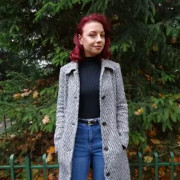 Małgorzata Orłowska, PhD, Postdoc
Małgorzata Orłowska, PhD, Postdoc
Favorite research & tools: My main scientific interests are focused on using computational tools to explore the relationships between genome architecture, protein evolution and organism ecology.
Other interests: Cats, burlesque, pin-up style and metal music.
Publications
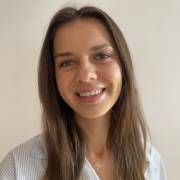 Zuzanna Leszczyńska, BSc, MSc Student
Zuzanna Leszczyńska, BSc, MSc Student
Favorite research & tools: Searching and modeling novel coiled-coil domains through structural analysis and sequence-based prediction methods
Other interests: Sports, cooking, and dogs
Publications
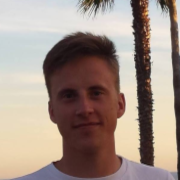 Kamil Krakowski, MSc, PhD Student
Kamil Krakowski, MSc, PhD Student
Favorite research & tools: The primary area of my scientific interests is molecular biology, with particular emphasis on RNA and transcriptional modulation of gene expression. I am also passionate about microbiology and bioinformatics.
Other interests: Programming, watching movies, biking, travelling
Publications
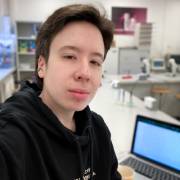 Małgorzata Malczewska, MSc, PhD Student
Małgorzata Malczewska, MSc, PhD Student
Favorite research & tools: My primary scientific interests involve applying bioinformatic tools to study the evolution of life on Earth, with a particular focus on the impact of horizontal gene transfer on the evolution of eukaryotic microorganisms. I am also interested in investigating environmental factors that influence the occurrence and diversity of rhodopsin proteins in these organisms.
Other interests: Video and board games
Publications
 Joanna Leszkowicz, BSc, MSc Student
Joanna Leszkowicz, BSc, MSc Student
Favorite research & tools: My main areas of interests are processes of aging and longevity shared across species, as well as how disruptions of circadian clock alter behaviors and overall wellbeing of organisms
Other interests: Video games, Slavisitcs
Publications

Favorite research & tools: Analysis of physicochemical properties of biological molecules using both experimental and computational methods
Other interests: Fantasy books, computer games and social sciences to some extent
Publications
